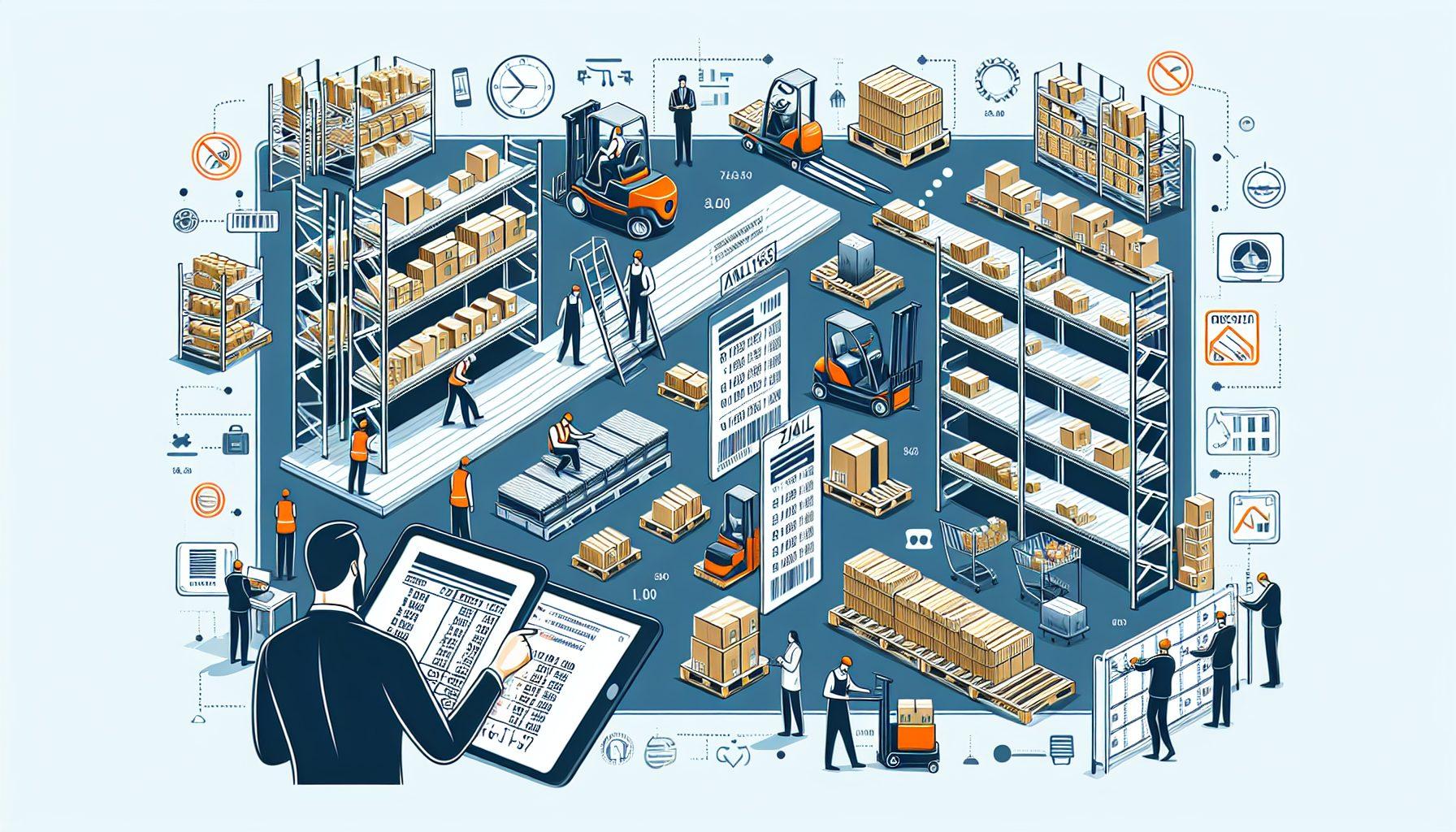When it comes to running a successful warehouse operation, it is crucial to closely monitor and analyze overhead costs. By conducting a comprehensive warehouse overhead cost analysis, businesses can identify areas of inefficiency, reduce unnecessary expenses, and optimize their overall operations. In this article, we will explore the steps involved in conducting a warehouse overhead cost analysis and how HCO Innovations can assist in this process.
The Importance of Warehouse Overhead Cost Analysis
Warehouse overhead costs include various expenses associated with running a warehouse facility, such as rent, utilities, insurance, maintenance, and labor. These costs can significantly impact a company’s profitability and competitiveness, making it essential to conduct a thorough analysis.
By conducting a warehouse overhead cost analysis, businesses can:
- Identify areas of cost overrun: Analyzing overhead costs enables companies to pinpoint specific areas where expenses are higher than necessary. This could include excessive energy consumption, underutilized space, or inefficient labor allocation.
- Improve resource allocation: Understanding the distribution of overhead costs allows businesses to allocate resources more effectively. By identifying high-cost areas, companies can make informed decisions about resource allocation, potentially leading to significant savings.
- Drive operational efficiency: Analyzing overhead costs provides insights into operational inefficiencies. By identifying bottlenecks and areas that require improvement, companies can implement strategies to enhance productivity and streamline their operations.
- Enhance decision-making: A thorough warehouse overhead cost analysis helps management make informed decisions about budgeting, pricing, and resource allocation. It provides a clear picture of the financial impact of various operational decisions.
Steps to Conduct a Warehouse Overhead Cost Analysis
Conducting a warehouse overhead cost analysis involves several key steps. Let’s take a closer look at each one:
1. Gather Data
The first step in conducting a warehouse overhead cost analysis is to gather relevant data. This includes financial statements, invoices, utility bills, payroll records, and any other documents related to overhead expenses. It is essential to ensure that you have a comprehensive and accurate overview of your warehouse costs.
Partnering with a solution provider like HCO Innovations can simplify this process. Their expertise in warehouse optimization allows them to streamline data collection and provide valuable insights into your overhead costs.
2. Categorize Overhead Expenses
Once you have gathered the necessary data, categorize your overhead expenses. This will help you gain a clear understanding of the different cost components and identify areas that require further analysis.
Common categories of warehouse overhead expenses include:
- Rent or lease.
- Utilities (e.g., electricity, water, gas).
- Insurance.
- Maintenance and repairs.
- Equipment and technology.
- Labor costs (e.g., salaries, benefits).
- Administrative expenses.
3. Analyze and Evaluate Expenses
Once you have categorized your warehouse overhead expenses, it’s time to analyze and evaluate each expense category. Look for any significant variations or anomalies compared to previous periods or industry benchmarks. This step will help you identify areas of potential cost reduction and optimization.
This is where the expertise of HCO Innovations can be highly valuable. They offer advanced analytics solutions that can help you uncover hidden patterns or trends in your data, enabling you to make data-driven decisions for cost optimization.
4. Identify Inefficiencies and Opportunities
During the analysis process, pay close attention to areas where inefficiencies or opportunities for improvement exist. This could include excessive energy consumption, underutilized space, overstaffing, or ineffective processes.
By identifying these areas, you can develop and implement strategies to address them and optimize your warehouse operations. HCO Innovations specializes in providing warehouse optimization solutions that enhance productivity, efficiency, and cost-effectiveness.
5. Develop and Implement Improvement Strategies
Based on your findings from the warehouse overhead cost analysis, develop a set of improvement strategies. These strategies should be designed to address the identified inefficiencies and opportunities for optimization.
Some common improvement strategies may include:
- Improving energy efficiency through the use of LED lighting, smart sensors, and energy management systems.
- Implementing lean practices to streamline workflows and eliminate waste.
- Investing in automation and technology solutions to improve operational efficiency.
- Optimizing space utilization through better layout planning and storage systems.
- Enhancing workforce management through better scheduling, training, and performance measurement practices.
HCO Innovations offers a range of innovative solutions and technologies that can support the implementation of these improvement strategies. Their expertise in warehouse optimization can help you achieve significant cost savings and operational improvements.
6. Monitor and Review
After implementing the improvement strategies, it is essential to monitor and regularly review your warehouse overhead costs. This will help you assess the effectiveness of the strategies and make any necessary adjustments.
Continuously monitoring and reviewing your overhead costs will allow you to maintain a lean and efficient warehouse operation in the long term.
Conclusion
A warehouse overhead cost analysis is a critical process that can significantly impact a company’s bottom line. By conducting a thorough analysis, businesses can identify inefficiencies, reduce unnecessary expenses, and optimize their overall operations.
Partnering with a warehouse optimization solution provider like HCO Innovations can simplify the process and provide valuable insights. Their expertise in warehouse optimization, combined with advanced analytics solutions, can help businesses achieve significant cost savings and operational improvements.
Take the first step towards optimizing your warehouse overhead costs today. Visit HCO Innovations to learn more about their warehouse optimization solutions and how they can assist you in conducting a comprehensive warehouse overhead cost analysis.

